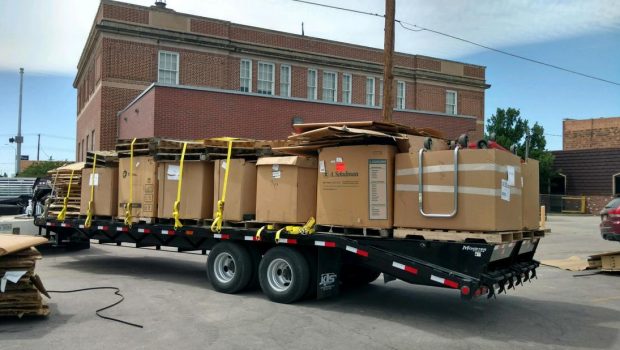How to Safely Transport Electronics in Your Cross-Country Move
Most of us can agree that moving makes the list of worst things to do ever. Although it can be dreadful, putting effort into protecting your belongings can be the difference between a TV arriving intact or in less-than-ideal condition. This article serves as a reminder to pay special attention to your gadgets and electronics while packing. Check out these helpful hints for ensuring your tech valuables travel cross-country trouble free.
Pre-Packing Security Tips
Before you start to physically move your electronics, invest in a spacious, long-distance moving vehicle like the Chevy Colorado, which was awarded Motor Trend’s Truck of the Year award twice in a row. The Colorado is roomy and comfortable, and has superior fuel economy, all of which make for a smooth cross-country move. The best part is that you’ll have this vehicle for many years to come, so it’s not just a one-time use. Once you have a reliable vehicle, follow this plan of attack for safe transits:
- Try to keep your owner’s manual on hand for specific relocating instructions or reassembly, and use original packing if possible.
- Consider temperatures that can damage electronics (this includes ink cartridges that are sensitive to extreme temperatures).
- Insure your items in case something needs to be replaced; photograph your electronics before and after packing to use as support in case of an insurance claim.
- Enhance your valuables’ security by using the theft-alert SPOT tracking device that sends notifications via your phone
- Change passwords as additional protection in case anything gets stolen.
- Waterproof any possessions using moving containers instead of boxes, in the event of any inclement weather.
Organize Cords
In the interest of saving time and not testing your patience, you may hurry to throw all your cords into a duffle bag. However, taking your time to pack your cords in an orderly fashion prevents the future frustration of untangling and struggling to find what goes where. Color code your cords and ports with labels that correspond with the matching electronic and manage your cords with Millipede cable rings or ties. Take pictures of how the cords are connected so you can easily mimic this photo during setup.
Use Packing Materials Generously
Like moving dishes and other breakables, it’s always better to err on the side of caution when safeguarding your gadgets. This includes packing with sturdy three-ply boxes (preferably one box per electronic; cords and accessories packed separately) stuffed with packing paper and anti-static bubble wrap. Use static-free dish or hand towels as extra padding for fragile items with screens; remember, bubble wrap or packing paper can damage the screen.
Strategically Pack, Tape & Label
Wrap and tape your electronic device with the towel or cardboard cutout, along with a layer of paper or bubble wrap. Surround this entire package with more paper and bubble wrap. Pad the bottom of the box with another static-free towel or blanket to absorb impact when it’s set down. Then use heavy-duty packing tape on both sides to close the box; don’t use masking or duct tape. You’ll want to label each box with “Fragile,” “Handle with Care,” “This Way Up.” Another packing tip is to avoid writing that the box contains a valuable electronic for security purposes.
Prepare Your TV Properly
First, use a soft, dry cloth to clean your TV, preventing dust particles from scratching or clogging your TV. Then follow these tips to ensure damage-free handling:
- Pack using a side-loading, specially made and measured box for the size of your flat-screen TV.
- Stuff open space in the box with Styrofoam peanuts or more bubble wrap.
- Protect the TV by wrapping it in a blanket secured with tape, rope or shrink wrap.
- Always set the TV box vertically upright labeled with “Fragile” and “This End Up.”
Follow Best Buy’s guide for more tips on how to safely and transport your TV in your vehicle or your moving rental.
One of the biggest mistakes self-movers make during a big move is they wait until the last-minute, turning moving into a rush project. To mitigate as much damage and loss as possible, take the time to prep (e.g., getting the right materials), organize, pack and carefully load items into your vehicle Not only are you safeguarding your valuables, but you’re also setting yourself up for easy unpacking and assembly in the new space.

















